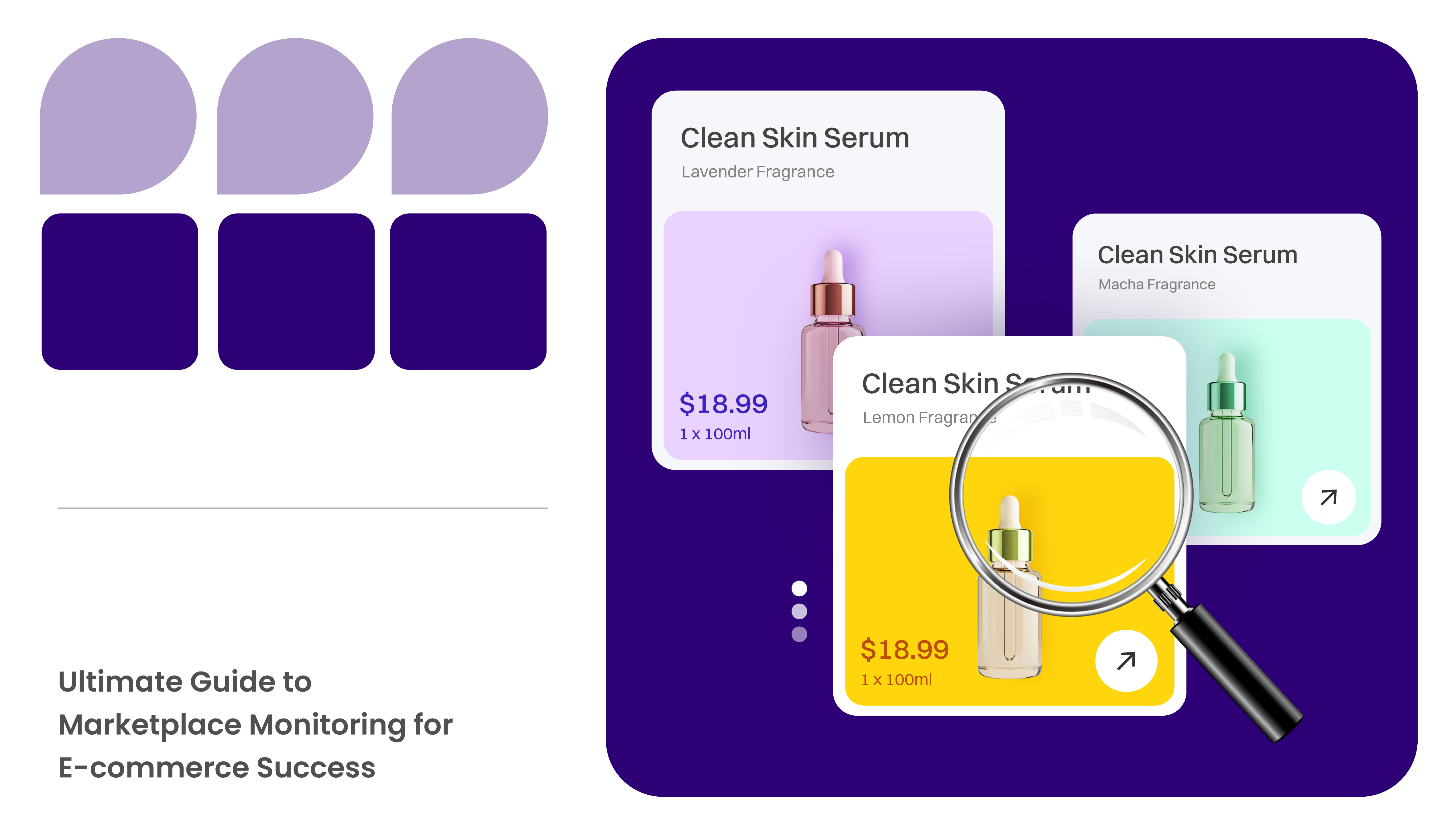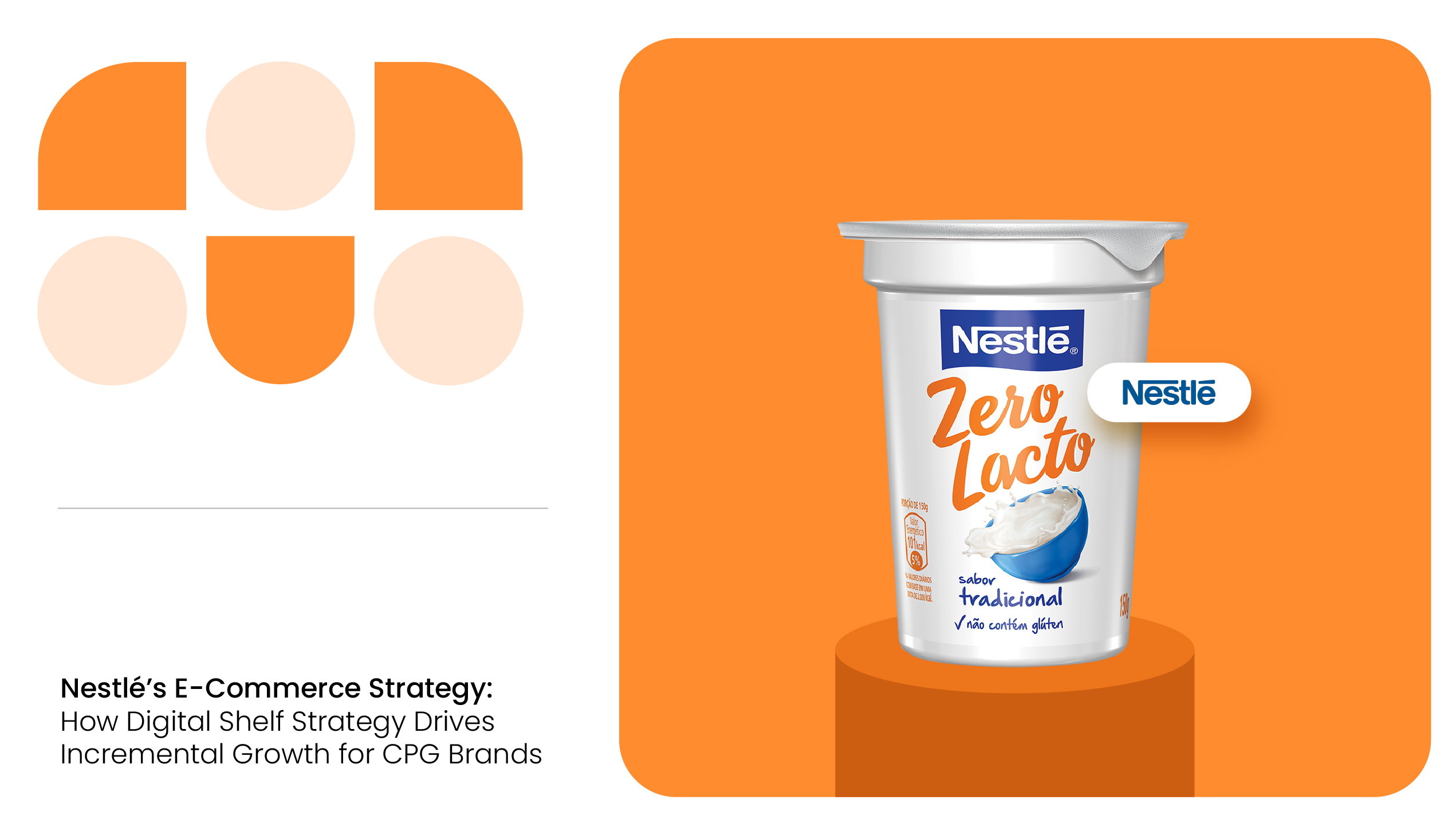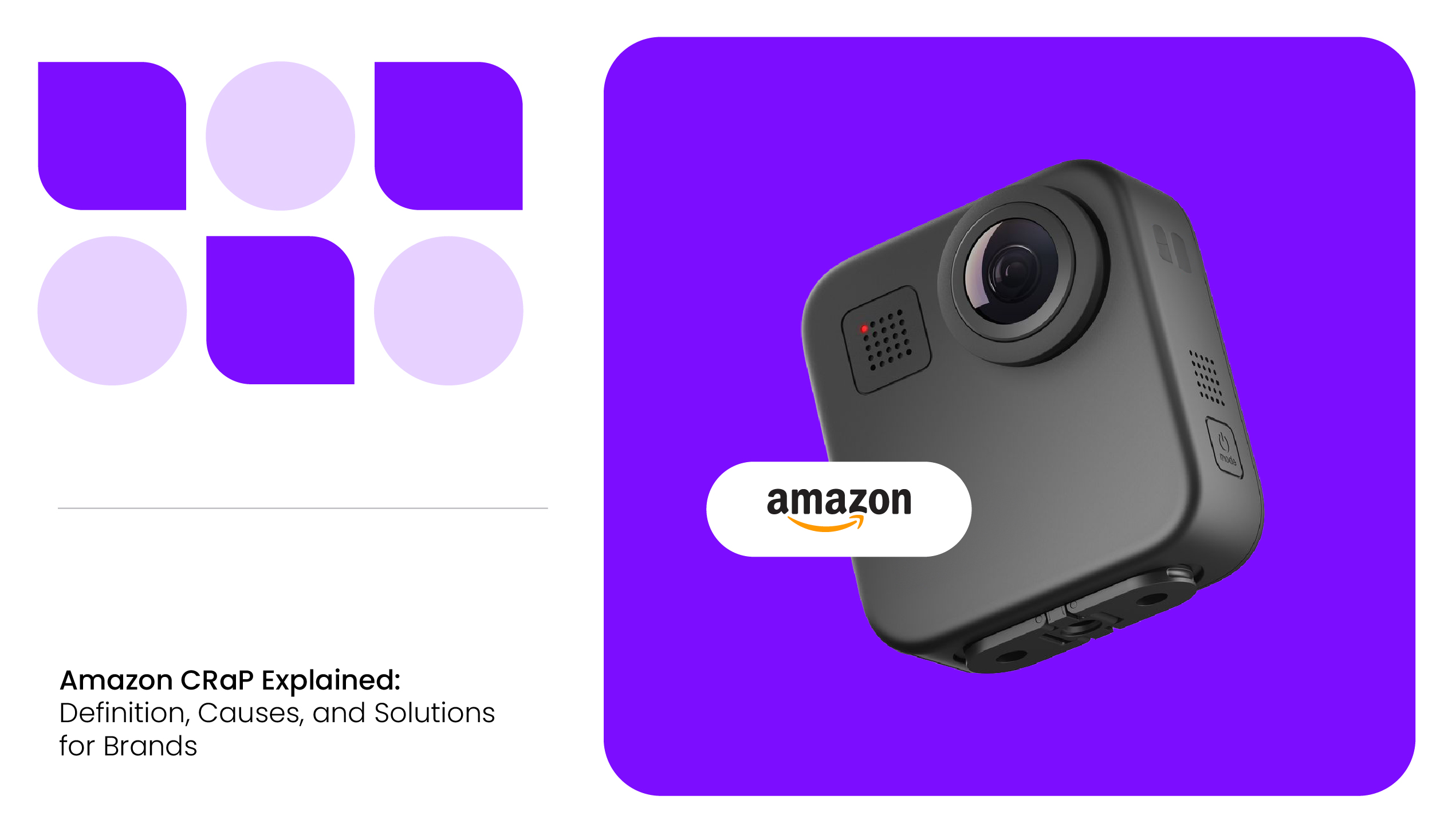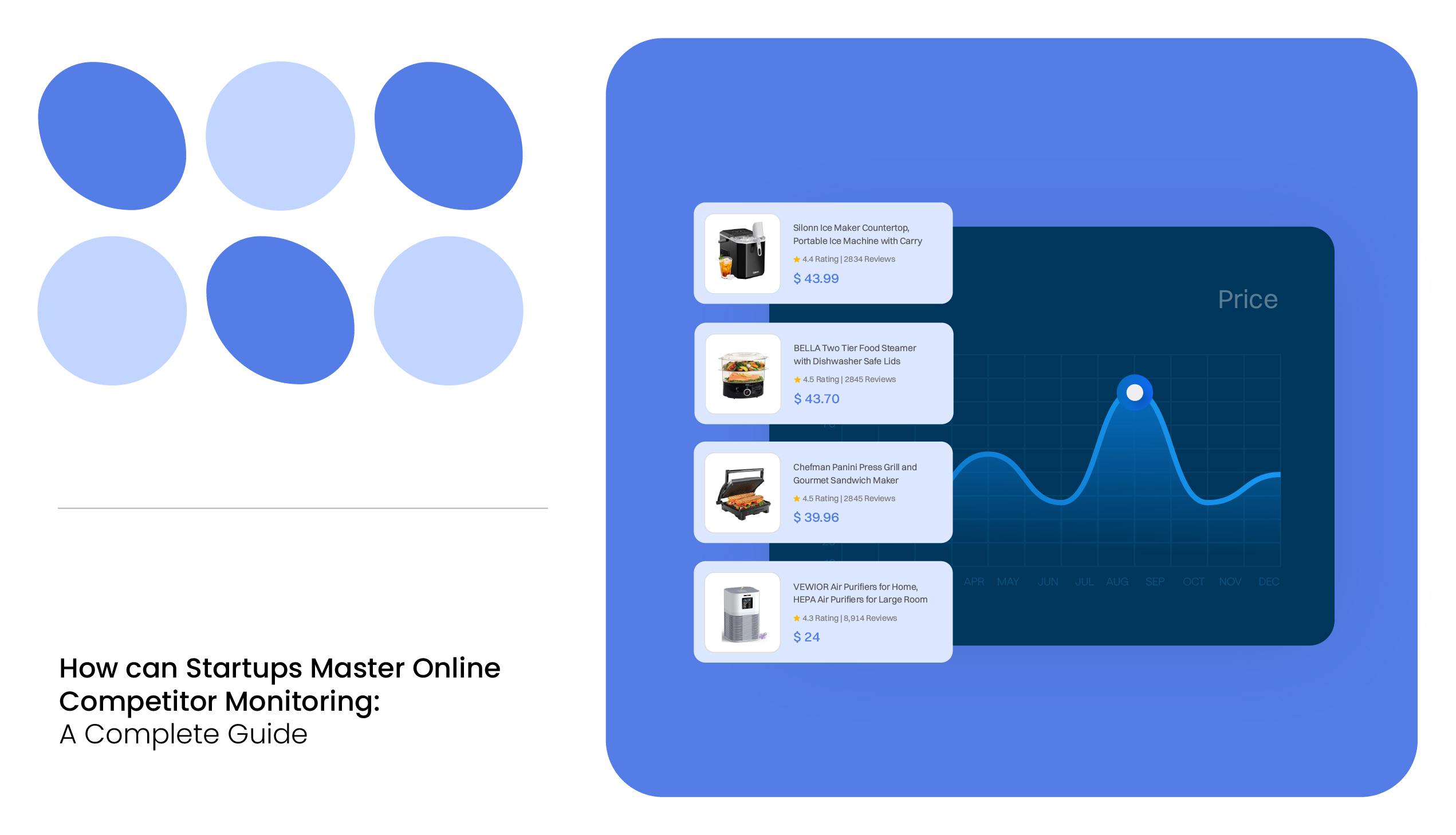Ever wonder why your competitors seem to be outpacing you on Amazon or Walmart? Maybe you’ve noticed a sudden drop in sales, but you’re not sure what caused it. Or worse—are unauthorized sellers undercutting your prices and damaging your brand reputation?
In this situation, what would it mean for your business if you could spot pricing violations instantly or ensure your product listings are compliant and constantly stay one step ahead of your competition? With marketplace monitoring, these aren’t just goals—they’re achievable outcomes.
That’s where MetricsCart comes in. From monitoring MAP compliance to analyzing reviews and ensuring content accuracy, we help you gain valuable insights into pricing fluctuations, competitor strategies, and customer sentiment. This allows you to take timely action and maintain your market position.
What is Marketplace Monitoring?
Marketplace monitoring involves tracking and analyzing product listings, prices, and seller activities across online platforms to maintain brand reputation and compliance. It helps businesses ensure fair competition, maintain profit margins, and comply with pricing policies.
Key Components of Marketplace Monitoring
Marketplace monitoring involves tracking various key components to ensure your brand’s success and compliance in competitive online platforms.
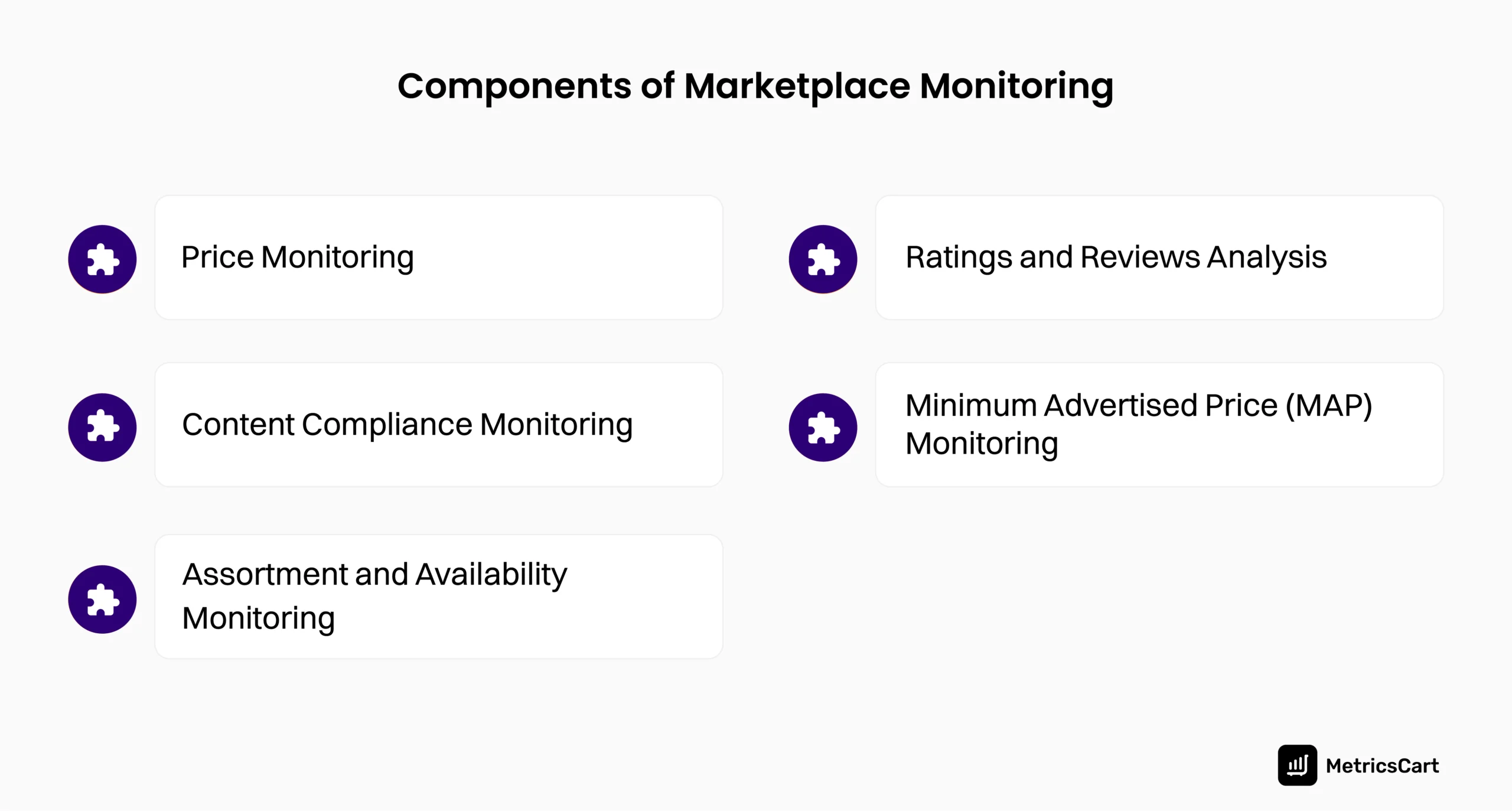
Below are the main components of marketplace monitoring:
Price Monitoring
Price monitoring involves tracking product prices across various platforms to ensure competitiveness and adherence to pricing policies. This helps identify pricing trends and make informed decisions.
Content Compliance Monitoring
Content compliance monitoring ensures that product listings meet marketplace guidelines and legal standards. It includes verifying that product descriptions, images, and other content are accurate and consistent across all platforms.
Assortment and Availability Monitoring
Assortment and availability monitoring is the process of tracking product availability and assortment across different marketplaces to meet customer demand effectively. It ensures optimal product availability, minimizes lost sales opportunities, and maintains a competitive edge.
Ratings and Reviews Analysis
Rating and review monitoring includes analyzing customer feedback to identify areas for improvement and maintain a positive brand image. It also includes monitoring customer reviews and ratings to understand customer satisfaction and address any issues promptly.
Minimum Advertised Price (MAP) Monitoring
This is the process of tracking and ensuring compliance with a brand’s established minimum advertised price policies to maintain fair competition and brand value. It helps prevent price wars and protect profit margins.
Why is Marketplace Monitoring Crucial for E-Commerce?
Marketplace monitoring brings numerous benefits to e-commerce businesses. They are:
- Marketplace monitoring helps identify counterfeit or unauthorized sellers, thereby protecting the brand’s reputation and ensuring customers receive genuine products.
- By monitoring competitors’ strategies, businesses can adjust their offerings and pricing to stay ahead in the market. This proactive approach enables them to respond swiftly to market changes and customer preferences.
- Marketplace monitoring ensures adherence to pricing policies and legal regulations, thereby protecting brand integrity and avoiding potential penalties.
How to Conduct Marketplace Monitoring?
Enlisted below are the steps brands can take to conduct marketplace monitoring:
Set Clear Objectives
Before implementing marketplace monitoring, it’s essential to establish clear goals that align with your business objectives. You can start by identifying the specific challenges your business faces on marketplaces—whether it’s unauthorized resellers, price undercutting, or negative reviews.
Once you’ve pinpointed these pain points, you can set targeted goals such as optimizing pricing strategies, driving revenue growth, or strengthening brand protection. This ensures that your monitoring efforts are strategic and lead to long-term success in the marketplace.
Track Key Metrics
Based on the objectives, you need to track the appropriate metrics to gain valuable insights into market dynamics and make informed decisions. For instance, if you want to improve your rating and reviews across marketplaces, you need to conduct customer feedback analysis and understand their sentiment regarding your product.
This will help address negative reviews promptly and ensure product innovation, thereby enhancing customer satisfaction and driving higher sales.
READ MORE | Want to Respond to Negative Reviews Promptly? Check out Responding To Negative Reviews on Amazon: A Seller’s Guide
Analyze Competitor Strategies
Effective marketplace monitoring isn’t just about tracking your performance—it’s also about understanding what your competitors are doing. Keeping an eye on their strategies helps you stay ahead and adapt to market changes.
One critical factor to monitor is the competitor’s pricing strategy. They often use dynamic pricing to attract customers or adjust to seasonal demand. By analyzing their pricing tactics, you can enhance your strategy to stay competitive.
Additionally, tracking promotions and discounts provides insights into how competitors engage customers through special offers, loyalty programs, and limited-time deals. This information allows you to create more promotions that drive sales and enhance customer retention.
Utilize Advanced Tools
Leveraging marketplace monitoring tools is essential for effectively managing MAP compliance, content accuracy, and pricing across platforms like Amazon, Target, and Walmart. These tools automate tracking, making it easier to maintain control over your brand’s online presence.
Investing in advanced solutions like MetricsCart streamlines monitoring efforts by providing real-time tracking and reporting capabilities. MetricsCart can track pricing across multiple marketplaces, detect unauthorized sellers, monitor stock levels, and analyze customer feedback trends, helping businesses make data-driven decisions.

Conclusion
Without a clear strategy to track pricing, seller compliance, and competitor strategies, brands risk losing revenue, damaging their reputation, and falling behind.
Marketplace monitoring empowers brands to protect their pricing, optimize listings, and respond to market changes in real time. By leveraging tools like MetricsCart, businesses can automate tracking, gain valuable insights, and take proactive measures to maintain their competitive edge.
By ensuring MAP compliance, analyzing customer sentiment, or preventing stockouts, an effective marketplace monitoring strategy helps businesses maximize growth, enhance customer trust, and drive long-term success.
Want to Stay Ahead in Online Marketplaces?
FAQs
Depending on the industry and market dynamics, it is recommended to monitor pricing, stock levels, and competitor strategies daily or weekly to stay updated.
The best practices for effective marketplace monitoring include regular audits, using automation tools, analyzing competitor strategies, staying updated on marketplace policies, and taking proactive action against violations.
You can identify unauthorized sellers by using monitoring tools like MetricsCart, conducting regular audits, and analyzing marketplace data to spot inconsistencies in product listings and pricing.
You can use automated monitoring tools like MetricsCart to track price fluctuations and detect unauthorized price changes.
Yes, marketplace monitoring helps detect counterfeit products by tracking unauthorized sellers, verifying product listings, and analyzing customer reviews for potential red flags.

